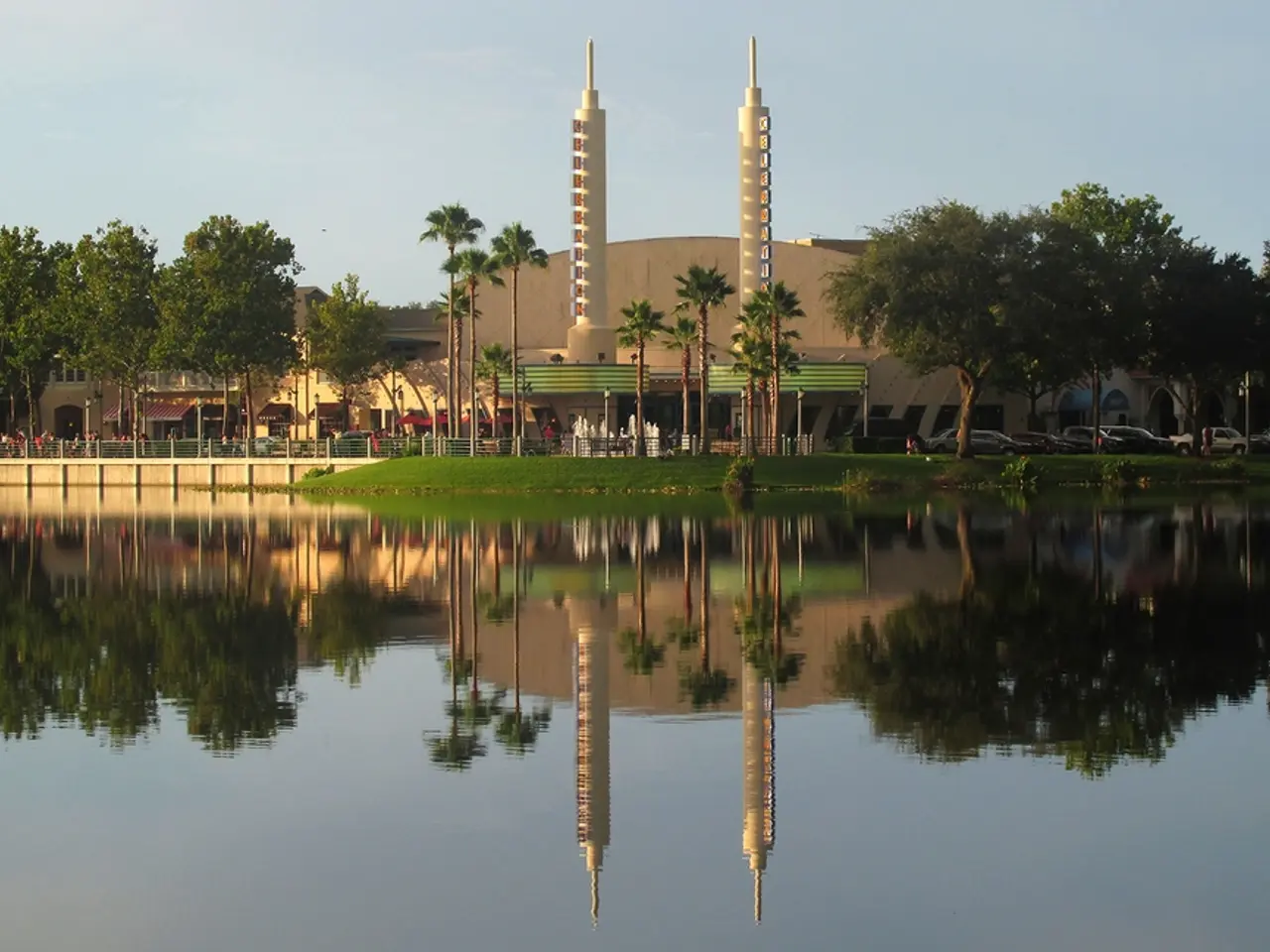Forward-Thinking Technology: Shaping a Greener Tomorrow
In a world where the health of our oceans is under threat, the development of blue technology offers a beacon of hope. This innovative field harnesses the power of the ocean and cutting-edge technology to generate sustainable energy, combat pollution, and restore marine ecosystems.
One of the most promising advancements in blue technology is the use of algae-based adsorbent materials. Researchers at Florida Atlantic University have developed a novel adsorbent from blue-green algae (cyanobacteria) harvested from harmful algal blooms. Enhanced with lanthanum chloride or zinc chloride, this material can remove up to 90% of phosphorus from polluted water within 30 minutes. By targeting the nutrient fueling algal overgrowth, invasive algae are transformed into a low-cost cleanup tool, effectively using pollution to fight pollution [1].
Another innovative approach is marine biotechnology, which focuses on restoring ecosystems, reducing pollution, and creating sustainable resources. This includes engineering probiotics to restore coral reefs, creating biodegradable plastics from seaweed polymers, and developing marine-derived biofuels. These biotechnologies not only help in sustainable resource management but also directly tackle pollution such as plastic waste and habitat degradation [2].
For tackling plastic pollution, technologies like SEAD’s Blue Barriers employ water flow in rivers to capture ocean plastics early, then extract high-value materials from the collected waste, turning pollution into economic opportunity. Breakthrough discoveries such as biodegradable plastics that dissolve fully in water within hours promise to drastically reduce microplastic pollution [4].
Data and knowledge platforms, such as the IPOS platform launched at One Ocean Science Congress, function like an ocean-focused knowledge base and "Ocean’s IPCC," linking science, local knowledge, and policy to foster actionable innovations against pollution and other threats [3][5].
Blue technology also contributes to sustainable fisheries management, ocean-cleaning devices, and coral reef restoration projects. Smart water management systems help conserve water and ensure it is distributed effectively across communities through smart water meters and smart water grids. These systems optimize water usage across industries and urban settings using sensors, data analytics, and automation [6].
In agriculture and urban settings, blue technology innovations address water scarcity through water-efficient irrigation systems and smart water grids. Desalination technologies, aided by blue technology, make previously unusable water sources accessible for human consumption or agriculture [7].
The integration of AI and machine learning with blue technology can improve data analysis, predictive modelling, and decision-making for marine conservation and water management. Sustainable aquaculture systems minimize environmental impacts through closed-loop and integrated multi-trophic aquaculture (IMTA) practices. Blue technology aims to protect aquatic environments, preserve biodiversity, and ensure efficient use of water resources [8].
Blue technology also improves wastewater treatment and desalination processes, making previously unusable water sources available for human consumption or agriculture. Marine robots collect plastic and other pollutants from the ocean, while biodegradable alternatives to plastic products are less harmful to marine life [9].
Innovations in bioremediation, using microorganisms to clean up pollutants in a natural, environmentally friendly way, are part of blue technology's scope. Blue technology supports the conservation of carbon sinks like kelp forests and mangrove swamps, aiding in the ocean's carbon capture and sequestration. Blue technology promotes cleaner, more energy-efficient transportation methods in marine industries, such as eco-friendly shipping technologies [10].
In conclusion, blue technology represents a significant leap forward in our ability to combat ocean pollution, restore marine ecosystems, and ensure the sustainable use of marine and water resources. From algae-based adsorbents to smart water management systems, the field is a testament to human ingenuity and our commitment to preserving our oceans for future generations.
References: [1] https://www.fau.edu/newsdesk/articles/2021/08/blue-green-algae-could-be-the-key-to-cleaning-up-polluted-water.php [2] https://www.nature.com/articles/d41586-021-01809-9 [3] https://www.ipos.global/ [4] https://www.sead-foundation.org/innovations/blue-barriers/ [5] https://www.oneoceanscience.org/ [6] https://www.un.org/sustainabledevelopment/water-and-sanitation/ [7] https://www.un.org/waterforlifedecade/water-and-climate-change.shtml [8] https://www.un.org/sustainabledevelopment/ocean/ [9] https://www.nature.com/articles/d41586-021-01461-z [10] https://www.un.org/sustainabledevelopment/ocean/blue-economy/
- The development of blue technology leverages the power of the ocean and advanced science to generate sustainable energy, combat climate-change-related pollution, and restore marine ecosystems.
- In the realm of blue technology, researchers at Florida Atlantic University have created an adsorbent from blue-green algae, transforming harmful algal blooms into a low-cost cleanup tool for polluted water.
- Marine biotechnology, a part of blue technology, focuses on restoring ecosystems, reducing pollution, and producing sustainable resources, like biodegradable plastics from seaweed polymers.
- SEAD’s Blue Barriers, a technological innovation, captures ocean plastics early in rivers, then extracts high-value materials from the waste, providing an economic opportunity from pollution.
- Data and knowledge platforms, such as the IPOS platform, serve as an ocean-focused knowledge base, linking science, policy, and local knowledge to foster sustainable innovations against pollution and other threats.
- Smart water management systems, another application of blue technology, help conserve water and optimize its distribution effectively through smart water meters and grids, promoting sustainable living and efficient water use.
- Integration of AI and machine learning with blue technology can improve data analysis, predictive modeling, and decision-making in marine conservation and water management, setting the stage for lifelong learning and continued advancements in environmental-science.
- Blue technology supports cleaner, more energy-efficient transportation methods in marine industries through eco-friendly shipping technologies, demonstrating the field's commitment to sustainable-living and reducing technology's environmental impact in the auto-racing sector.




